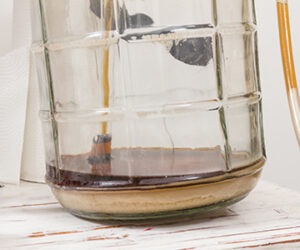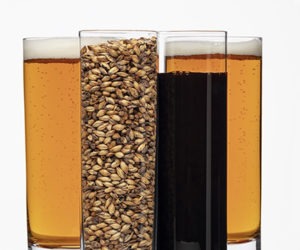Lautering 101

Step 1 — The Mashout
The term mashing out refers raising the temperature of a mash above the “safe zone” for enzymes that are working on breaking down the carbohydrates (sugars) of the wort. What this means is that the carbohydrates of the wort are “locked in” or static due to the extra heat de-activating the enzymes. This step is most important when brewers are looking to maintain a bigger body with more complex carbohydrates versus a drier beer. This step also reduces the wort’s viscosity, allowing the subsequent lautering steps to occur more easily.
Often brewers will hold their mash in the 148–160 °F (64–71 °C) range to maximize the enzyme’s activity for starch conversion. At the point they feel like the mash is complete to their satisfaction, often after 45–60 minutes, the lauter process begins. The mash is heated up above the highest threshold of the mash enzymes — roughly 165 °F (74 °C). The most common temperature seen for the mashout process is 168–170 °C (76–77 °C) with a five-minute rest before moving onto step two, the vorlauf.
A recirculation system such as a HERMS (heat-exchange recirculation mash system) or RIMS (recirculating infusion mash system) can avoid scorching the grains. If you don’t have a recirculating mash system, there are a few other options available. Adding a calculated amount of boiling water to your mash can raise the temperature to mashout. Or a brewer can simply heat their sparge water (see step 3) hotter than normal, often to 180–190 °F (82–88 °C), which if done properly can emulate the effects of a mashout step. Finally, brewers can pull out part of the mash and boil that portion for a couple minutes before returning it to the mash to raise the whole mash temperature. This process is known as decocting the mash and often 1⁄3 of the mash will be pulled out for boiling.
Step 2 — Vorlauf
To vorlauf in German means to run ahead. But in brewing terms, it’s referring to the first runnings that come out of the mash/lauter tun when a bottom drain is opened. Brewers define vorlauf as a recirculation process as these cloudy first runnings are ahead of what they want, so they will recirculate this wort back on top of the mash to be re-run through the grains and cleared of the cloudiness in the process. This step is often simply referred to as the recirculation step. The wort is recirculated back on top of the mash until the turbidity is no longer apparent.
Homebrewers can vorlauf either with a pump to very slowly pump the wort back on top of the mash, or use a container to collect the wort that is then gently poured back on top of the mash. Always start slow in order to allow the grain bed to settle in place and not over-compress the grains.
Step 3 — Sparging
The sparge step is the final step in the lauter process and is the “sprinkling” phase according to the German root of the word. Once the wort has run clear during the vorlauf step, the wort begins to be directed towards the brewing kettle. Sparging is a washing process in which the sugars are rinsed from the grains with fresh, hot water.
At this point, brewers have two options; they can perform a batch sparge or a fly sparge. Batch sparge implies that they drain all the wort out of the mash/lauter tun before filling it back up with sparge water. This can be repeated for a double batch sparge. Fly spargers will try to maintain a constant rate where wort out = sparge water in. Often you will hear that fly-sparge brewers should try to maintain a 1-inch (2.5-cm) layer of sparge water on top of the grain bed. This is difficult on a homebrew scale, so don’t fret if you find you’re over or under for a little bit. In general I don’t exceed the initial strike water volume of the mash to sparge water volume beyond 1:1.25. This precludes unwanted tannins leaching into my beer from excessive sparging. Often I do 1:1 volumes though.
Putting it all Together
This three-step process does not need to be performed for every beer. If you’re looking for a drier beer, skip the mashout . . . it’s unnecessary to purposefully stop the enzymes as you lauter. Don’t care about a little bit of turbidity and grain particles in your brew kettle? You can skip the vorlauf; after all BIAB brewers don’t care. Don’t want to sparge? Increase the volume of your mash water so that you can run-off the full volume direct to the brew kettle. I advise you to read up on the potential pitfalls of full-volume mashes if you do go this route though.



